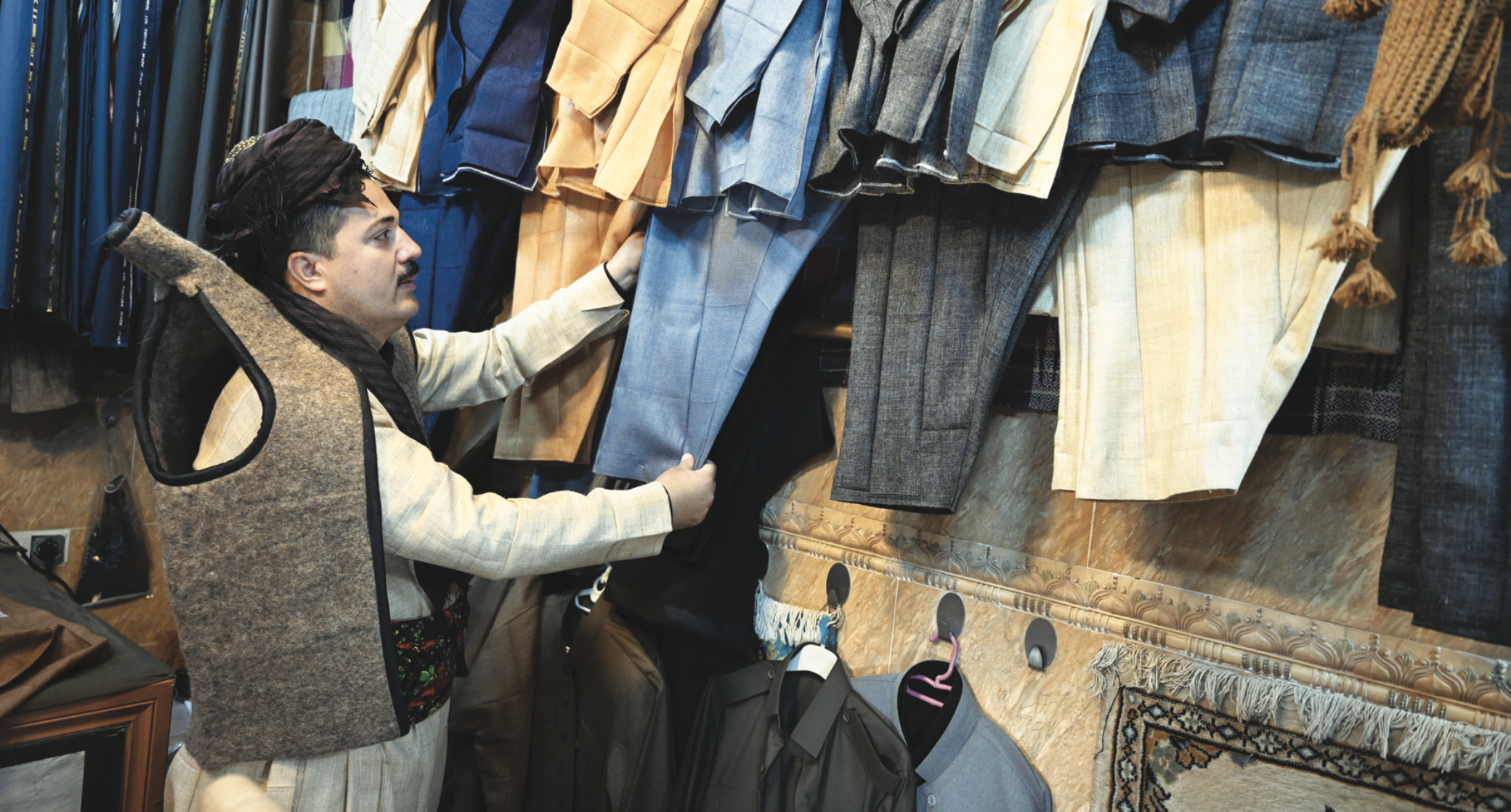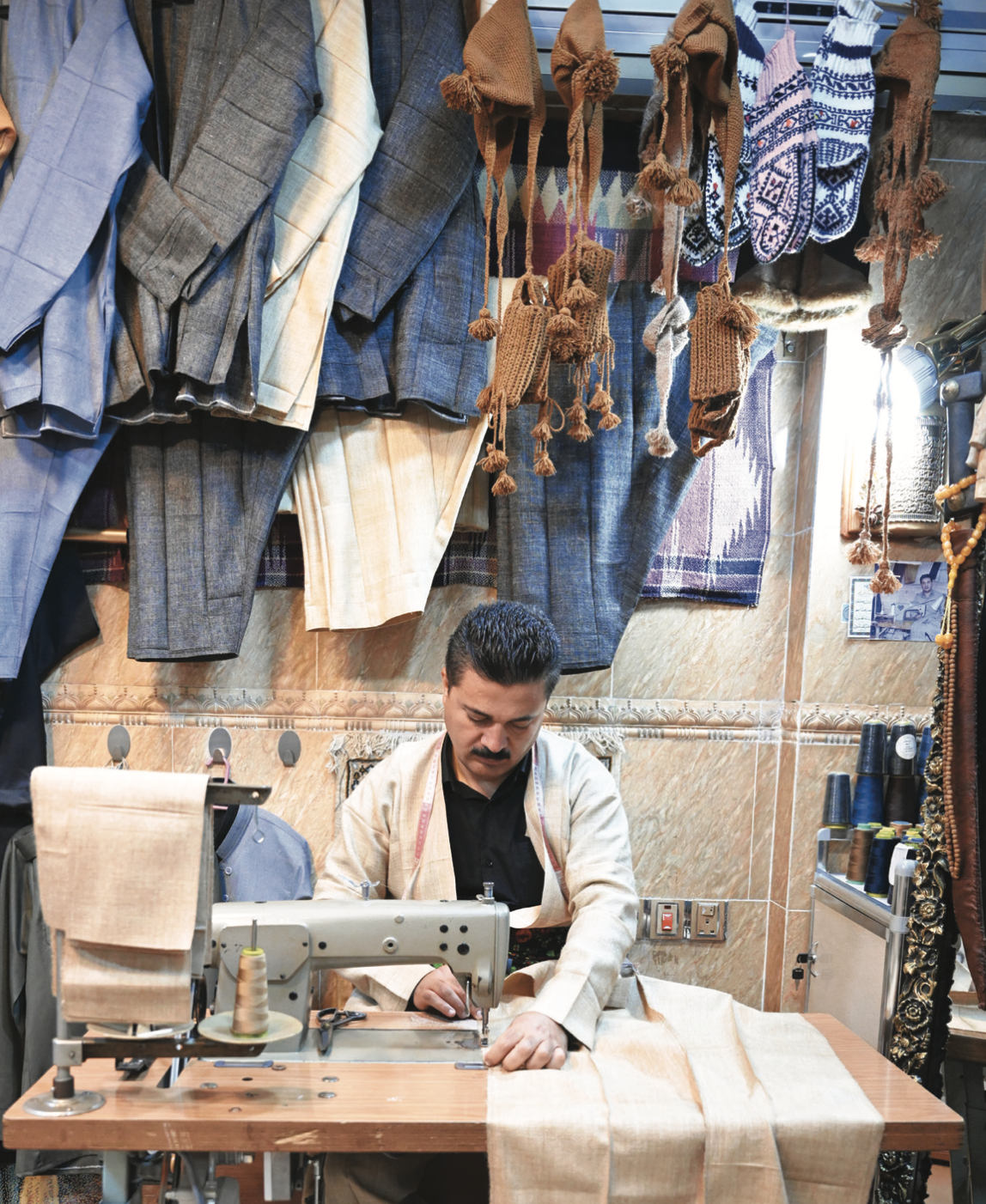Kurdish attire stands out as a distinctive feature of the nation’s cultural identity, showcasing unique symbols like the shal, which holds significant folkloric value among the Kurdish people. This traditional garment is donned in various styles across all the different regions of Kurdistan, with each region contributing its own nuances to the overall aesthetic.
The attire worn by Kurdish men and women reflects the diverse characteristics of different Kurdish regions. From mountainous terrains to desert landscapes, Kurdish clothing adapts to local environments, with variations in style and fit noticeable across different geographies.

Historically, the shal has been associated with Kurdish regions like Bahdinan and Hawraman, where it has been worn for generations, shaping its design and significance over time. Today, it stands as a quintessential element of Kurdish attire, evolving in terms of color, design, and craftsmanship. While traditional shals were limited in color options, contemporary versions offer a wider spectrum.
In the marketplace, shals are categorized into three main types: Ranya, Bahdinan (especially Zakho city), and Hawraman, each distinguished by its sewing methods and pricing. Zakho shals are renowned for their meticulous craftsmanship and command the highest prices due to the quality of materials and intricate preparation process, which utilizes premium Marz hair.
Typically reserved for special occasions like weddings and festivals, shals are treasured for their longevity and durability, lasting up to 30 to 35 years with minimal maintenance. They are particularly favored during festivities like Newroz, contributing to the cultural fabric of Kurdish celebrations.
The revival and preservation of Kurdish clothing, including the iconic shal, hold cultural significance, as these garments serve as tangible links to Kurdish heritage. While traditional production methods have waned over time, there is a renewed interest in preserving these artisanal practices, ensuring that future generations remain connected to their cultural roots.

Adel Ali, a shal vendor in Halabja, attests to the enduring appeal of these garments, especially during festive seasons like Newroz and Ramadan. The intricate sewing process, involving lengths of fabric up to 25 meters, highlights the craftsmanship and attention to detail involved in creating each shal.
From sourcing raw materials like wool from sheep or goats to the intricate dyeing and weaving processes, crafting a shal is a labor-intensive endeavor that requires skill and precision. The wool is meticulously washed, cut, and dyed before being woven into fabric using specialized machinery and techniques, culminating in the creation of this iconic Kurdish garment.

In essence, Kurdish clothing, epitomized by the timeless shal, embodies the rich tapestry of Kurdish culture, weaving history, tradition, and craftsmanship into every thread. As efforts to preserve and promote these cultural treasures continue, they serve as enduring symbols of Kurdish identity and pride.
Peshraw Mahdi is a freelance journalist and photographer with substantial experience in the field, having worked for numerous media agencies over several years. He has won multiple awards in photojournalism.